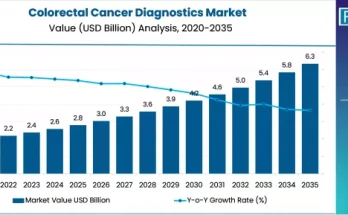The global Surgical Headlights Market, valued at USD 430 million in 2025, is projected to double and reach USD 845 million by 2035, expanding at a 7% CAGR, according to the latest findings by Fact.MR.
As operating rooms move toward precision-based, minimally invasive procedures, surgical teams are prioritizing high-performance, ergonomic, and wireless lighting systems that ensure better visibility, control, and efficiency.
Precision Lighting Becomes the New Standard in Surgical Environments
Surgical headlights are now indispensable in modern operating suites—offering surgeons focused, shadow-free illumination directly at the site of operation. With growing emphasis on accuracy, sterility, and surgeon comfort, LED-based systems have emerged as the preferred choice across cardiac, neurological, ENT, and gynecological surgeries.
According to Fact.MR’s stakeholder survey, 85% of surgeons identify uniform, adjustable light beams as critical for minimizing shadows during high-risk procedures. Meanwhile, 72% highlight portability and battery life as the top differentiators in new product selection.
Ergonomics also plays a decisive role, with 78% of respondents emphasizing the need for lightweight headbands, better weight distribution, and improved ventilation to prevent fatigue during long procedures.
“The surgical lighting market is rapidly shifting from traditional halogen systems to smart, battery-efficient LED platforms. These not only enhance visibility but also redefine surgeon comfort, contributing directly to clinical precision and workflow efficiency,” said a senior healthcare analyst at Fact.MR.
LED Dominates as the Core Technology
By technology, LED headlights account for nearly 72% of global market share in 2025, overtaking halogen-based systems. LED systems deliver brighter, more focused, and energy-efficient illumination while reducing heat output—a critical advantage for lengthy surgical procedures.
Manufacturers such as Enova Illumination, Stryker, SurgiTel, and BFW Inc. are introducing headlights with adjustable beam intensity, integrated magnification, and wireless control features, transforming how surgeons experience precision lighting.
Conversely, halogen headlights—once the standard in surgical setups—retain a 28% share, primarily in resource-constrained facilities due to their lower upfront cost. However, high maintenance, excessive heat, and limited lifespan continue to push hospitals toward LED alternatives, particularly in advanced economies and tertiary-care centers.
Application Insights: Cardiac and Neurological Surgeries Lead
By application, cardiac surgeries account for 27% of total demand, followed by neurological surgeries (22%), as both specialties require extreme precision under challenging visibility conditions.
High-intensity LED systems with deep cavity lighting and shadow-control optics are increasingly used in cardiac operating rooms for procedures like valve replacements and bypass surgeries.
Similarly, in neurosurgery, continuous, cool, and uniform lighting is essential to prevent glare or tissue overheating—making LEDs the preferred technology.
ENT and gynecological surgeries are also witnessing rapid adoption, particularly in ambulatory surgical centers (ASCs) and clinics, where portability and sterilization ease are crucial. This segment is anticipated to contribute significantly to market expansion through 2035.
Regional Insights: North America Leads, Asia-Pacific Accelerates
North America dominates the global surgical headlights market, supported by high surgical volumes, advanced hospital infrastructure, and strong investment in OR modernization. Nearly 83% of healthcare professionals in the U.S. and Canada reported transitioning to LED-based headlights for minimally invasive and robotic-assisted surgeries.
Europe follows closely, with Germany, France, and the UK investing in rechargeable, portable, and sterilizable lighting systems, driven by outpatient surgery growth and sustainability initiatives.
The Asia-Pacific region represents the fastest-growing market, with China, Japan, and South Korea expanding surgical capacity through healthcare infrastructure investments and rising medical tourism. China alone is forecast to register a CAGR exceeding 8%, supported by local manufacturing and rising surgical training programs.
Market Dynamics: Wireless, Ergonomic, and Sustainable
The next decade will redefine surgical lighting through three core themes:
-
Wireless Innovation – Cordless and rechargeable headlights with dual-battery systems are improving OR mobility and reducing clutter.
-
Ergonomic Evolution – Lightweight frames and custom-fit headbands are being developed to optimize comfort during long operations.
-
Sustainability and Smart Integration – Manufacturers are incorporating eco-friendly materials, sterilizable handles, and digital intensity controls to meet global compliance and environmental goals.
Fact.MR projects that by 2030, over 76% of new surgical headlight systems will feature adaptive beam optics and wireless capabilities.
Competitive Landscape: Innovation at the Core
The surgical headlights market is moderately consolidated, led by innovation-driven players focusing on surgeon comfort, lighting precision, and integrated systems.
| Company | Estimated Market Share (2025) | Strategic Focus |
|---|---|---|
| Enova Illumination | 14–18% | LED headlamps with high-lumen output and extended battery life |
| SurgiTel | 11–14% | Loupe-integrated headlights emphasizing ergonomic posture |
| Bryton Corporation | 9–12% | Lightweight, modular systems for outpatient and veterinary use |
| KLS Martin Group | 7–10% | High-intensity headlights integrated into surgical portfolios |
| Welch Allyn (Hill-Rom/Baxter) | 6–9% | Integrated OR lighting systems and multi-institutional supply models |
Emerging players such as Excelitas Technologies, Admetec Ltd., Cuda Surgical, and ATMOS MedizinTechnik GmbH & Co. KG are strengthening their global presence with compact, affordable, and specialty-specific devices.
Future Outlook (2025–2035): The Era of Smart Surgical Lighting
From AI-integrated beam control to sensor-based light intensity adjustment, the surgical headlight market is entering a phase of intelligent transformation. The next generation of headlights will interact with digital OR systems, enabling automated brightness calibration and data-driven lighting optimization.
Environmental concerns will further shape R&D investments. Manufacturers are expected to emphasize long-life batteries, recyclable components, and reduced power consumption to align with green hospital standards.
“By 2035, surgical headlights will not just illuminate — they will communicate, adapt, and enhance surgical precision in real time,” concludes Fact.MR’s healthcare research lead.
Conclusion
With global surgical volumes rising and healthcare systems prioritizing minimally invasive precision, the Surgical Headlights Market presents a strong opportunity for medical device manufacturers, component suppliers, and OR technology investors.
Continuous innovation in LED systems, wireless control, and ergonomic design will define the next generation of surgical lighting — empowering surgeons with unparalleled precision and performance.
Browse Full Report : https://www.factmr.com/report/surgical-headlights-market



